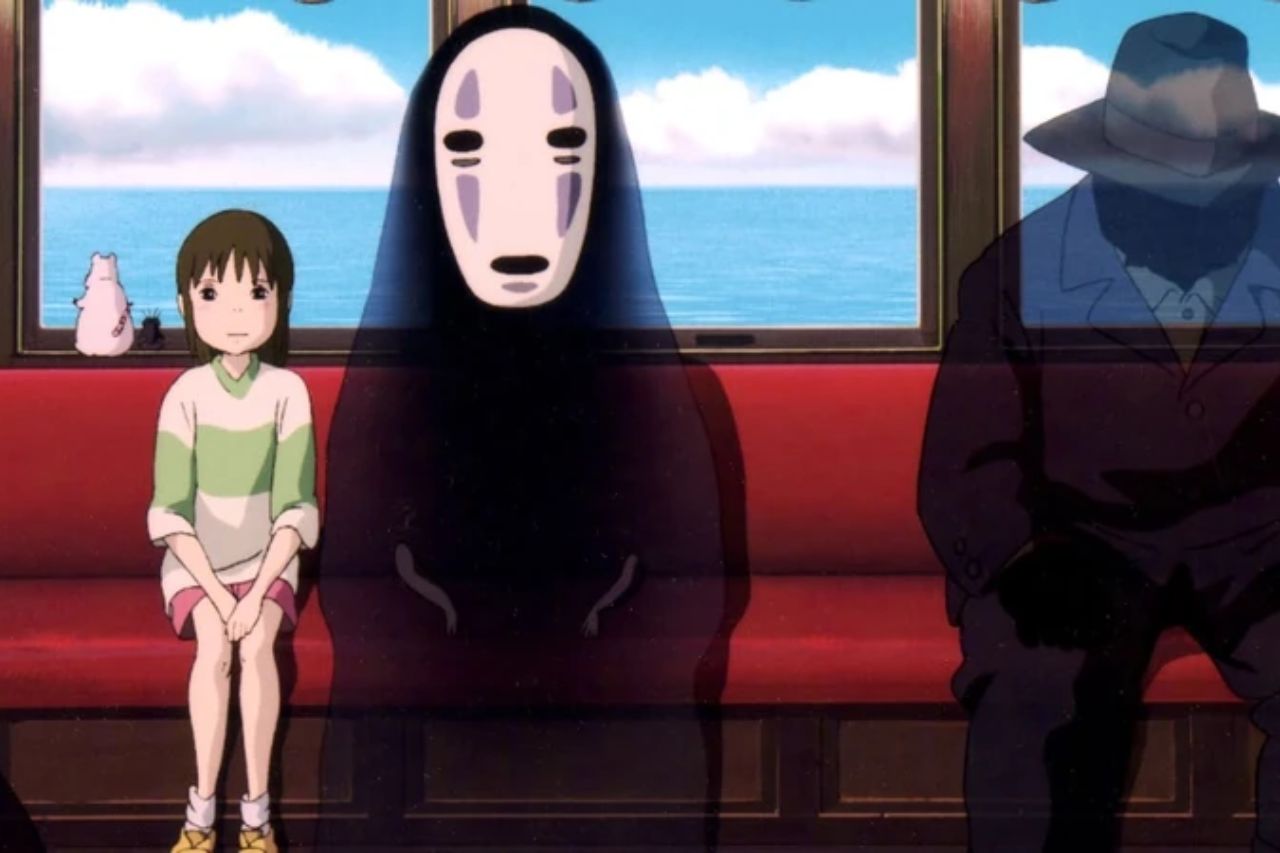Top 10 Best Studio Ghibli Movies (Ranked by a True Fan)
(Based on Heart, Not Hype)
Studio Ghibli films have never been just about fantasy for me. In fact, it has greatly influenced my view of life and even my writing style. They are a mirror of life, disguised as animation. They’re gentle messengers of grief, of joy, of growing up masked around fantasy and mythical beings.
After deep thinking and critiquing, I have finally made up my top 10 (P.S. I still love the rest of the movies not included in this list, it’s just that I have to make 10. Why? I don’t know why.) This isn’t a ranking based on technical brilliance. It’s a list built from the pieces they left inside me—the moments I paused, cried, smiled in silence, or sat with a line that felt like it was written just for me. Most importantly, the one that left me valuable lessons and realizations in life.
Spoiler alert: Some entries mention key plot points. Read with care if you haven’t seen them yet.
10. Castle in the Sky (1986)

Let’s be honest—Laputa is just a cool name. (But also kinda sounds like a bad word if you’re Spanish/Filipino-speaking.) This movie is a classic Ghibli adventure: sky pirates, ancient tech, magical amulets, and a floating city hiding in the clouds. I loved the dynamic between Pazu and Sheeta—two kids with more courage than most adults I know. Also, the music? Banger. The flying scenes made me want to build an airship out of cardboard.
What stuck with me wasn’t just the fantasy—it was the reminder that some things are meant to be left untouched. Not every discovery needs to be claimed. Not every power needs to be harnessed. In a world obsessed with control and conquest, Castle in the Sky quietly whispers: “Let go.” And sometimes, letting go is braver than holding on.
9. The Secret World of Arrietty (2010)
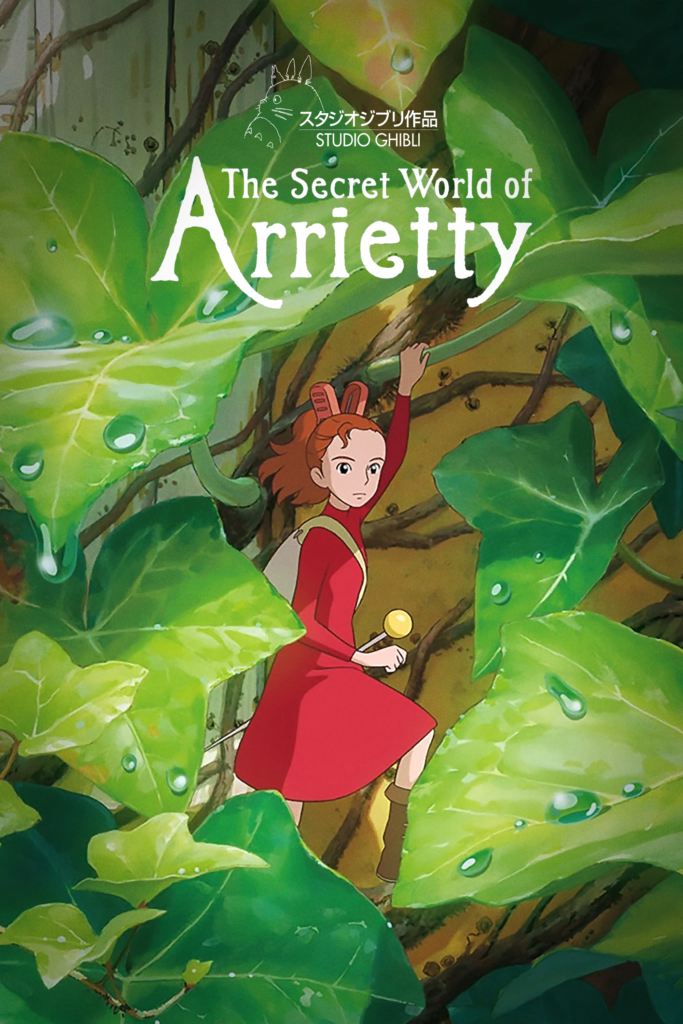
Everything in this movie is tiny and beautiful—like, “I wish I could live in a teacup” kind of beautiful. Seeing the world from Arrietty’s perspective was such a treat. The leaves look massive, the sugar cube is like a block of gold, and her pin-sword? Iconic. Arrietty is brave, curious, and quietly powerful. (Also, Sho? The calmest, cutest dying boy I’ve ever seen. Someone give that kid a hug.)
This movie taught me that you don’t have to be loud or big to be strong. Arrietty and her family live in the shadows, but they’re clever, resourceful, and full of dignity. Even when forced to leave, they don’t beg—they bow, and move on. That quiet grace stuck with me. You can live small and still leave a big impact.
8. The Tale of the Princess Kaguya (2013)
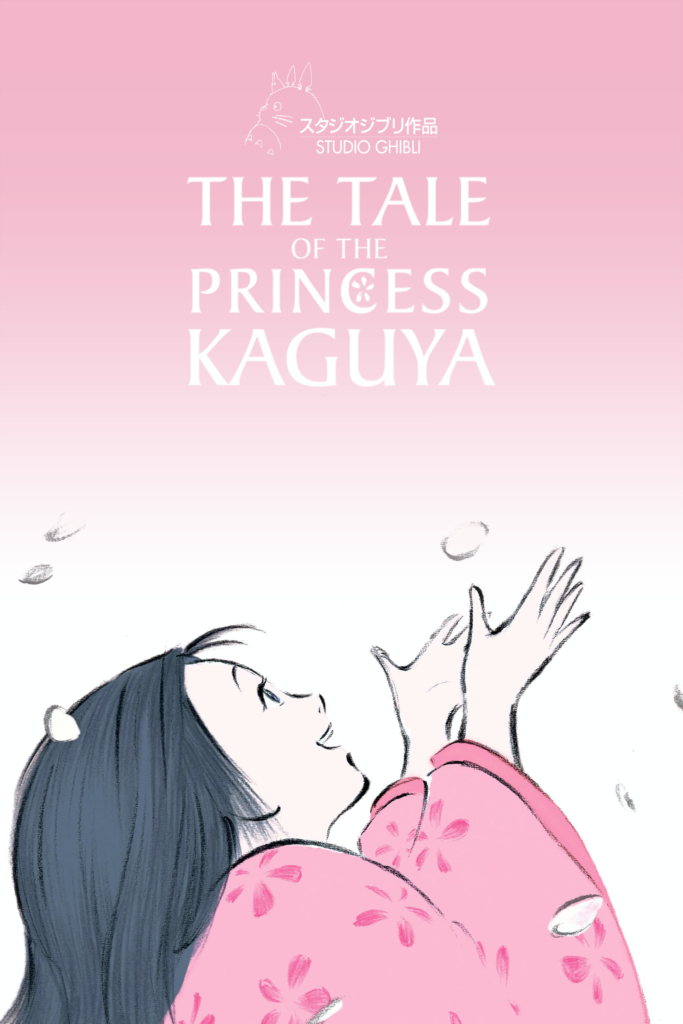
Okay, when I first saw the animation, I thought it was unfinished. (Like… is this a dream? Is this a flashback? Why does it look like someone drew this with a paintbrush mid-tears?) But then it hit. The hand-drawn look actually works so well with the story. It’s raw. Vulnerable. Kaguya’s story is beautifully tragic—from a bamboo stalk to a palace cage, all she wanted was to be free. And for sure a lof of us could relate to this concept.
This film is a soft punch to the gut about how society tries to tame joy. Kaguya is forced into ideals of beauty and status until she breaks. And when she leaves, it hurts—but also feels right. The lesson? Life isn’t about perfection. It’s about the fleeting, unpolished moments that made you feel alive. And this film is exactly that. I just feel bad for her foster parents; they deserve better.
7. Pom Poko (1994)
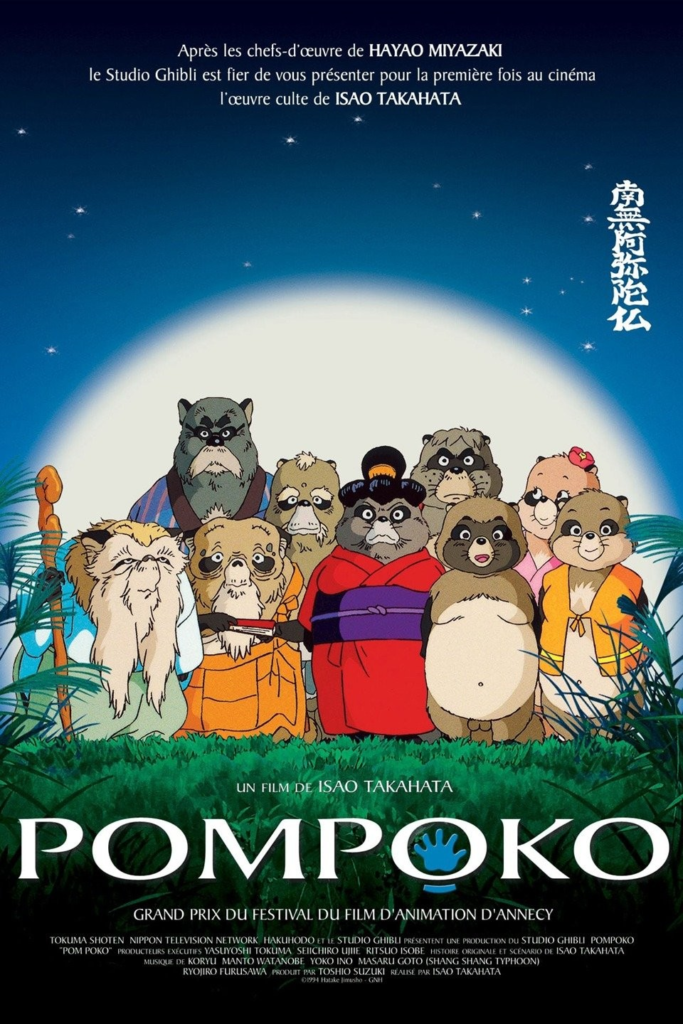
At first glance, Pom Poko looks like a comedy about magical raccoons (and yes, their balls can shapeshift—don’t ask, just go with it). It’s goofy, chaotic, and weirdly fun. But then, out of nowhere, it gets deep. These tanuki are losing their home to suburban sprawl, and no amount of magic or protest can stop it. It’s a weird mix of slapstick and sorrow—and it works. The scene where they transform into ghosts still gives me chills.
Beneath all the raccoon hijinks is a painful truth: nature is shrinking, and adaptation doesn’t mean healing. The tanuki try everything—war, trickery, blending in—but they still lose so much. The film doesn’t sugarcoat it. It just shows that grief and survival can exist side by side. That for every human development, one way or another, there is an opportunity cost. Honestly, I didn’t expect to cry over raccoons and hate humans for taking so much from nature, but here we are.
6. Ponyo (2008)
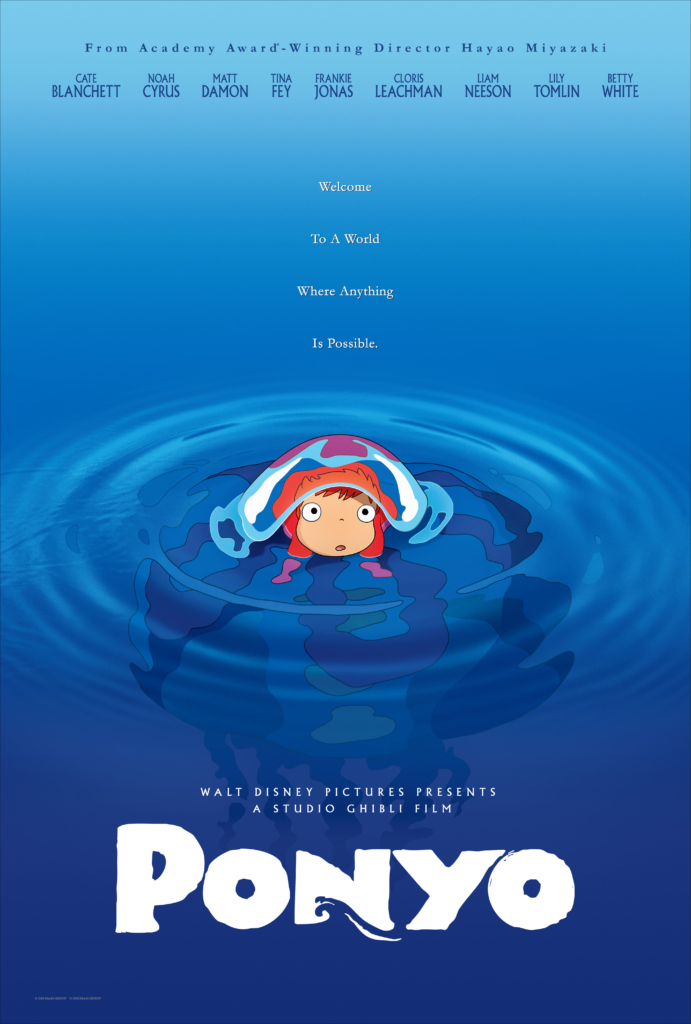
This movie feels like drinking a juice box while riding a rollercoaster made of waves. It’s chaotic, sweet, and sparkly. Ponyo is a fish who becomes a girl, screams “HAM!” like it’s a love confession, and causes the entire ocean to go feral just to see Sosuke again. The animation is wild—in the best way. Water has a life of its own, and Lisa (Sosuke’s mom) drives like she’s in Fast & Furious: Coastal Edition.
What I love most is how this movie talks about love—unfiltered, unconditional, and childlike. Ponyo doesn’t try to earn love. She is love. And Sosuke accepts her for who she is, even if she’s occasionally fishy. It reminded me that love isn’t always neat or rational—it’s choosing someone, even when they come from the sea and eat ham with their hands. I like that the film, unlike other Ghibli movies, has a good ending. Not the usual sad-happy ending of most Ghibli movies (if you’re a fan, you know what I mean).
5. Princess Mononoke (1997)
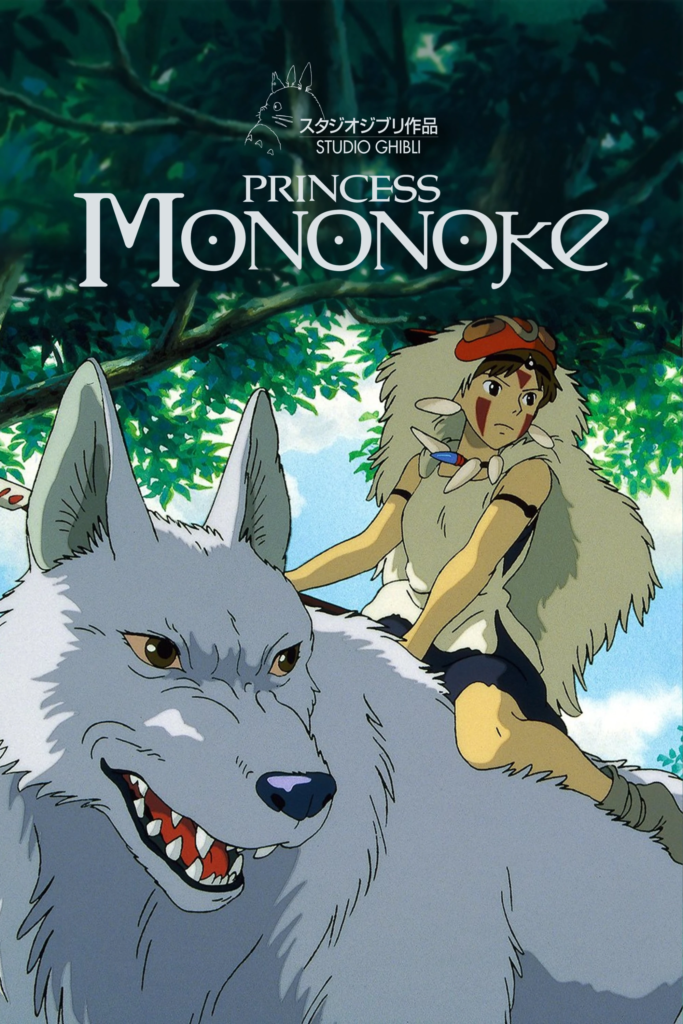
Okay listen—this movie is epic. Not just in scale, but in vibes. Giant wolves? Forest gods? Cursed arms? Yes please. Princess Mononoke dives headfirst into war, industry, and nature’s rage, and still manages to make everyone’s motives complex. Ashitaka is the coolest boy in the world with a literal demon arm, and San? She bites people, and I respect that. Lady Eboshi is technically the villain, but she’s also building a sanctuary for marginalized people. It’s… messy. And that’s why it’s brilliant.
The real lesson here is that there’s rarely a clear villain in real life—just opposing needs, pain, and misunderstood intentions. Mononoke shows that healing isn’t about winning, it’s about learning to live with the scar. Sometimes, both sides lose something. Sometimes that’s the only way forward.
5. My Neighbor Totoro (1988)

First of all, yes, I have two movies in number 5. Haha. How so? Just don’t ask. Okay, so this movie is like a warm hug wrapped in sunshine and tree bark. Not a lot happens, but that’s the magic of it. It’s soft. Gentle. Healing. Totoro isn’t a hero—he’s a vibe. (And also the best Uber you could ask for if your ride is a flying catbus.) Mei and Satsuki’s sibling bond is so pure, and every scene feels like a memory from a childhood you wish you had.
What I love is how the film sits in silence. It doesn’t rush to explain or entertain—it just is. Totoro teaches us that comfort doesn’t always need words. Sometimes, sitting next to someone while they cry is enough. And that even when life is scary (like waiting for news from a hospital), there’s magic waiting quietly in the trees.
4. Kiki’s Delivery Service (1989)

I love Kiki so much it hurts. She’s 13, has a talking cat (jealous), and moves to a new city to start her delivery business. But then… burnout. Creative block. Self-doubt. (Relatable.) What starts off as a fun witch adventure turns into one of the most honest portrayals of losing your spark. And when Kiki can’t fly anymore? Oh no. That was me after one bad day and five hours of overthinking.
The message here is clear: rest is part of the process. Kiki needed to slow down, reconnect with herself, and be okay not being okay. That hit hard. We don’t need to be productive all the time. We don’t need to have it all figured out at 13 (or 30). Sometimes, just showing up and delivering one package is enough. It’s just sad that Jiji the cat chose to live his own life with his own family and never spoke again :(.
3. The Boy and the Heron (2023)

This movie is a fever dream—but in a good way. A lot of people say they don’t understand the story. Girl, you will if you really glued your eyes on the film. Honestly, in this recent movie, you’ll see a bunch of elements from the past Ghbili films. Anyways, it starts in grief, dips into surrealism, and ends somewhere between nightmare and healing. Mahito is moody, the heron is unhinged (and possibly my favorite Ghibli creature now), and the world-building is like a maze of metaphors (No wonder a bunch of people are still confused. For this film, you literally need to think outside the box.)
What made it special was how it dealt with loss, not with cheesy closure, but with messy, layered emotion. Grief isn’t a straight line. Sometimes you enter another world just to face yourself. This film reminded me that healing doesn’t mean forgetting—it means choosing to keep going, even when you’re not ready. (Also: heron guy? 10/10 chaos energy.)
2. Grave of the Fireflies (1988)
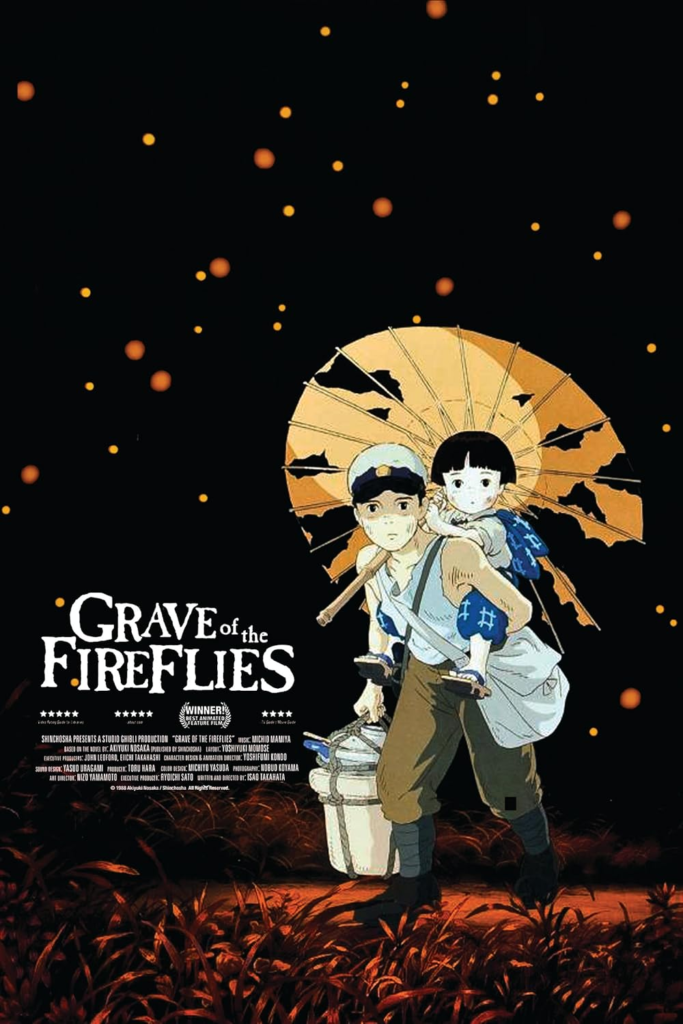
This movie doesn’t entertain, it devastates. If I want to suffer or my friends to cry, I watch this film. Seita and Setsuko’s story during wartime Japan is heartbreaking—two children trying to survive when the world has stopped caring. The animation is soft and beautiful, which makes the tragedy hit even harder. The fruit drop can? That’s where I broke. Completely.
There’s no fantasy here. No magic fix. Just a brutal truth: that innocence can be lost not just to war, but to indifference. Grave of the Fireflies forces you to sit with discomfort. And maybe that’s the point. It taught me that we are living in a cruel world. Sometimes, the innocent suffer from the chaos that humankind has brought to the world.
1. Spirited Away (2001)
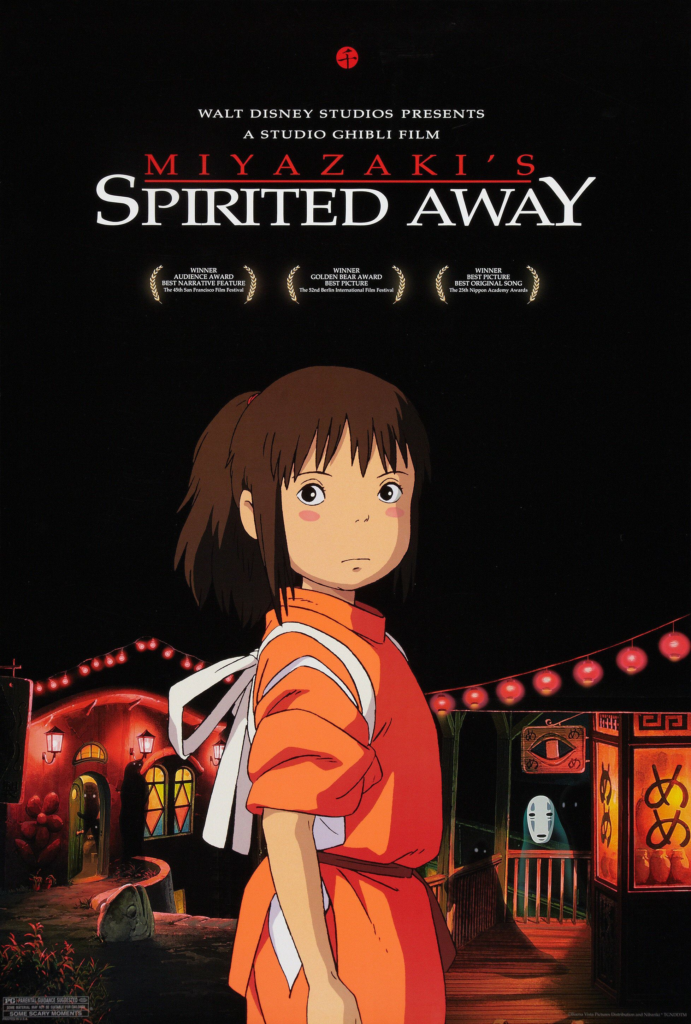
The GOAT. The masterpiece. The film that made me believe in spirits, bathhouses, giant babies, and the healing power of train rides across water. Chihiro starts off whiny and scared (relatable), but slowly becomes brave in the quietest, most beautiful way. No-Face? Tragic king. Haku? River-boyfriend of our dreams. Yubaba? Honestly, slay. The animation is stunning. Every frame is a painting. Every creature feels like it came from some ancient dream.
The reason this sits at the top for me is the growth. Chihiro doesn’t fight monsters—she faces herself. She learns to listen, to care, to remember her name when the world tries to erase her. Spirited Away reminded me that we’re all just trying to find our way through strange places. And that if we’re kind, patient, and a little brave, we’ll make it back home—even if we’re not the same person anymore.
These are the Ghibli films that made me laugh, cry, think too hard at 1 a.m., or whisper “what the heck” during a surreal scene. But most of all—they left me feeling something real.
Studio Ghibli doesn’t just tell stories. It teaches us how to feel again—quietly, softly, sometimes through a fish who loves ham or a soot sprite who just wants to be seen.
Which one left the biggest impact on you? Let me know your ranking too. There are no wrong answers (unless you rank Boy and the Heron below 10—just kidding. Kind of).

